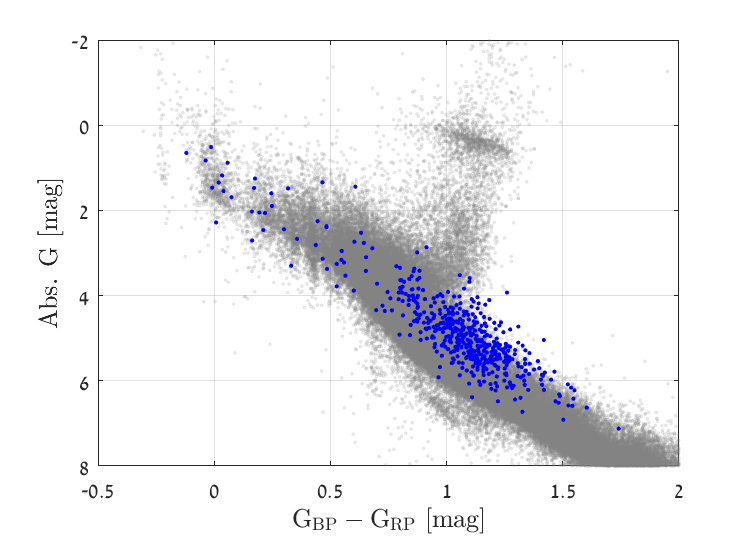10.6.4 Quality assessment and validation
Verification
The final list of 6336 candidates included 32 sources that were also classified as RR Lyrae stars — 25 of them are known RR Lyrae stars in the Milky-Way bulge, 24 of them from the OGLE survey (Soszyński et al. 2014) and one from the VVV survey (Contreras Ramos et al. 2018). Two further sources are not known in the literature but were confirmed as RR Lyrae stars from inspection of their light curves. Therefore, presumably RR Lyrae variables were excluded from the final list. The analysis of the and light curves yielded only a small number of systems with periodic colour information that was significant enough for our use. We derived the second harmonic amplitude by using Equation 10.2 for the light curve and inspected the distribution for the systems with . We found three outliers, with amplitude ratios smaller than 0.7, which were excluded from the catalogue, leaving 6306 candidates of ellipsoidal variables with compact companion secondaries. Finally, a visual inspection of folded light curves of a few dozens of selected examples showed the expected characteristic double-peaked appearance of the ellipsoidal modulation.

Validation
A binary with a main-sequence primary and a minimum mass ratio significantly larger than unity may be a candidate for having a dormant compact-object secondary. This is so because for a binary with two main-sequence stars the more massive star is expected to outshine its companion. The fact that the less massive star in the system is observed might indicate that the other star is a compact object. Therefore, the analysis is focused on the short-period binaries for which the primary star lies on or near the main sequence. The location of the candidates on the Gaia colour–absolute magnitude diagram is shown in Figure 10.9 for systems with parallax_over_error and parallax mas. As clearly seen, most systems contain main-sequence primaries, with less than 10 % of the candidates that are slightly above the main sequence.